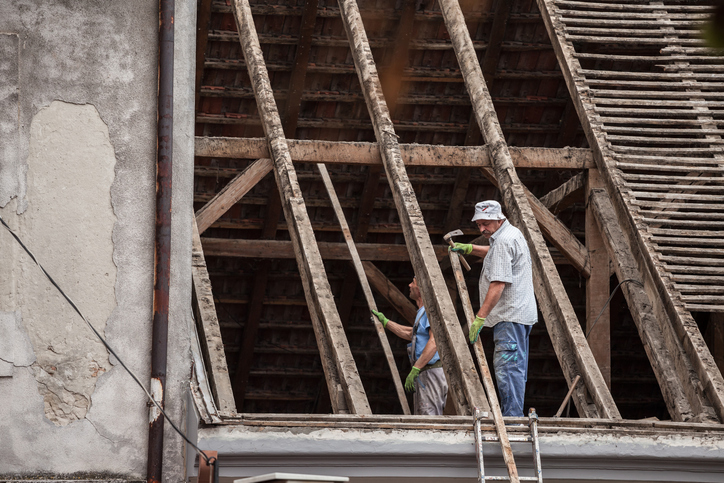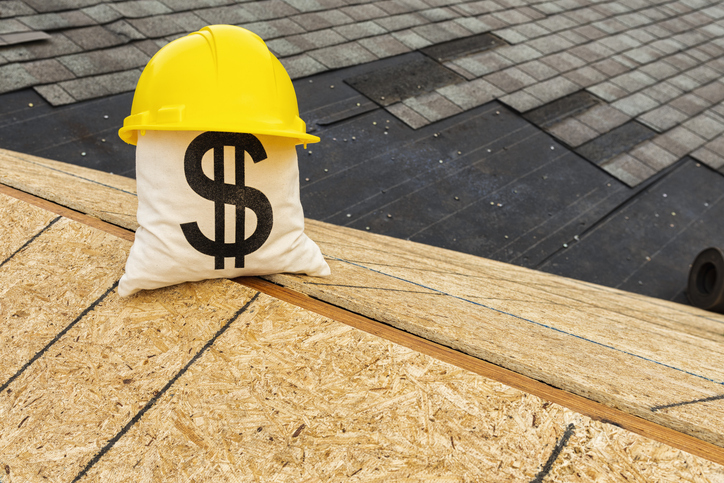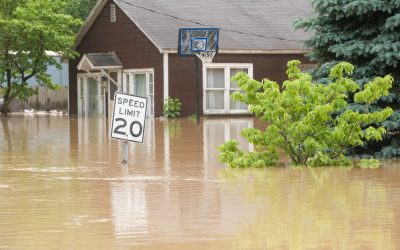Will a New Roof Lower My Insurance in Florida? Here’s What You Should Know
Florida homeowners are no strangers to intense storms, hurricanes, and heavy rainfall. In a state where weather-related damages are frequent, your roof plays a pivotal role in how much you pay for homeowners’ insurance. So worried about will a new roof lower my insurance in Florida? The answer is yes, but with important factors to consider.
Does a New Roof Affect Insurance?
Insurance companies in Florida assess property risk closely, and your roof is one of the biggest indicators of potential risk. A roof in poor condition increases the likelihood of claims due to water intrusion, wind uplift, or total structural failure during hurricanes. This makes your home riskier to insure, and often more expensive.
Many homeowners wonder, Does a new roof affect insurance? The answer is yes. When you install a new, hurricane-compliant roof, you send a clear message to insurers: your home is safer. This often results in lower premiums, more favourable policy terms, and better eligibility for comprehensive coverage, especially for wind and storm-related claims.

Why Roof Condition is Critical in Florida
Florida’s hurricane season (June to November) brings a heightened risk of property damage. High-speed winds, flying debris, and torrential rain frequently target vulnerable roofs. That’s why insurance providers scrutinize roofing details like age, material, and structural design.
If your roof is older than 15 years or lacks hurricane reinforcements, insurers may:
- Raise your premium significantly
- Refuse to renew your policy
- Offer limited coverage (e.g., excluding windstorm damage)
- Require a full roof replacement to maintain eligibility
A new roof, particularly one built to Florida Building Code standards, mitigates these risks and makes your home a safer bet for insurers.
Roof Age and Its Impact on Insurance Rates
Does the age of your roof affect insurance rates? Absolutely—especially in Florida, where older roofs are considered a major risk factor by insurance companies. As your roof ages, its ability to protect your home from storms, water damage, and structural issues decreases. This higher risk often results in:
- Increased premiums
- Limited or denied windstorm coverage
- Policy non-renewals or cancellations
Many Florida insurers have started placing stricter guidelines on roof age. If your roof is over 15 years old, you may be required to undergo an inspection to prove it’s still insurable. In some cases, coverage may be denied outright, or you’ll be offered only Actual Cash Value (ACV) instead of Replacement Cost Value (RCV) in the event of a claim.
For homeowners wondering does the age of your roof affect insurance rates, the answer is clear: the older the roof, the more you’re likely to pay—or risk losing coverage altogether.
To avoid this, consider a timely roof replacement and submit a wind mitigation report to your insurer. Doing so not only helps secure continued coverage but may also unlock premium discounts.
Does a New Roof Lower Insurance? Here’s What Florida Homeowners Should Know
Absolutely. Does a new roof lower insurance? Yes—and for Florida residents, the savings can be substantial. Homeowners can reduce their insurance premiums by 10% to 35% by installing a new roof, depending on several key factors:
- Your current insurer’s discount policy
- Type of roofing material used
- Compliance with Florida’s wind mitigation standards
- Roof shape and structural enhancements
Many homeowners see savings of $500 to $1,500 annually after replacing their roof, especially when the new roof is combined with other protective upgrades like hurricane shutters or impact-resistant windows.
What Qualifies for a Roof Insurance Discount in Florida?
1. Wind Mitigation Compliance
Florida law encourages homeowners to take steps to reduce wind damage. If your new roof includes features such as roof-to-wall reinforcements, secondary water barriers, or impact-resistant materials, you may be eligible for significant discounts under the Wind Mitigation Inspection Report (Form OIR-B1-1802).
Submit this form through a licensed inspector and share it with your insurance provider to start unlocking savings.
2. Hurricane-Resistant Materials
Not all roofing materials are created equal. Florida insurers give preferential treatment to roofing systems that have demonstrated higher resistance to hurricane-force winds and flying debris.
Common Qualified Materials:
- Metal Roofing: Long-lasting, fire-resistant, and wind-resistant up to 140 mph.
- Architectural Shingles (Class 4 impact rated): Better durability than standard 3-tab shingles.
- Clay or Concrete Tiles: Heavy and resistant to uplift, though expensive to install.
Planning a Roof Upgrade? Does Getting a New Roof Lower Home Insurance?
Let’s break it down with a real-life scenario to answer the common question:
Does getting a new roof lower home insurance? Absolutely—and the savings can be significant for Florida homeowners.
Example:
A Miami homeowner with a 20-year-old shingle roof pays around $3,800 annually for homeowners insurance. After replacing the roof with a Class 4-rated shingle system and submitting a wind mitigation report, their premium drops to $2,700 per year—a savings of $1,100 annually.
Over a 10-year period, that’s $11,000 saved, plus the added peace of mind that comes with stronger protection during Florida’s storm season.
Best Roof Shapes for Insurance Discounts and Materials for Florida Savings
The shape of your roof significantly affects how it performs during Florida’s intense windstorms—and insurance companies factor that in when determining your premiums. Understanding the best roof shapes for insurance can help you choose a design that reduces risk and maximizes savings.
Some roof designs resist uplift and wind damage better than others, making them a smarter and more insurable option for Florida homes
| Roof Shape | Wind Resistance | Insurance Impact |
|---|---|---|
| Hip Roof | Excellent | Most favourable for discounts |
| Gable Roof | Moderate | May require extra bracing |
| Flat Roof | Poor | Higher risk, higher premiums |
Important Considerations Before Replacing Your Roof
Before you jump into a roof replacement project, keep these Florida-specific insights in mind:
Hire a Licensed, Insured Roofing Contractor
Make sure they’re experienced in hurricane-prone zones and can provide documentation for insurance purposes. Look for companies with wind mitigation knowledge and the ability to install compliant roofing systems.
Check With Your Insurance Company
Some insurers offer additional discounts if you install specific brands or meet certain material guidelines. Communicate with your agent before installation to understand how to qualify.
Invest in a Wind Mitigation Inspection
Even if your roof is new, you won’t get all the insurance savings unless you file a proper mitigation report. This inspection costs about $100–$150 but could save you thousands over time.
Don’t Forget the Underlayment
Secondary water resistance layers beneath the roof offer extra protection against leaks. Some insurers specifically look for these barriers before offering full discounts.
Real Savings – How Much Can You Expect to Save?
If you’re wondering how much does a new roof save on homeowners insurance, the answer depends on several factors, but the potential savings are substantial, especially in Florida.
According to industry data, homeowners who install a new, hurricane-resistant roof can save between 15% and 35% on their annual premiums. This could translate to $500 to $1,500 or more per year, depending on the insurer, location, and type of roof.
For example, a homeowner in Tampa paying $3,600 annually for coverage with a 20-year-old roof might see their premium drop to $2,500 after installing a code-compliant roof and submitting a wind mitigation inspection report. That’s a savings of $1,100 per year, or $11,000 over a decade, not to mention increased protection and peace of mind during storm season.
To maximize your savings:
- Choose Class 4 impact-resistant shingles or metal roofing
- Ensure proper installation with a licensed Florida roofing contractor
- Submit a Uniform Mitigation Verification Inspection (OIR-B1-1802) to your insurer
So, when evaluating how much does a new roof save on homeowners insurance, remember that the right roof isn’t just a structural upgrade—it’s a smart financial move, too.
Do I Need to Notify My Insurer After Roof Replacement?
Yes, and it’s critical. After completing your roof upgrade, follow these steps:
- Collect all relevant documentation (permits, receipts, material specs)
- Schedule and complete a wind mitigation inspection
- Submit your Uniform Mitigation Verification Form
- Contact your insurance provider with all documents
- Request a policy reevaluation and adjustment of premiums
Only after this process can you be certain you’re receiving all applicable discounts.
Is It Worth Replacing Your Roof in Florida?
From both a safety and financial standpoint, the answer is a resounding yes.
Whether you live in Orlando, Tampa, Jacksonville, or coastal areas like Fort Lauderdale or Naples, the benefits of installing a storm-resistant, modern roof far outweigh the upfront costs. It enhances your home’s structural integrity, increases resale value, and delivers real savings on your insurance policy.
With hurricanes growing in intensity and insurers tightening coverage rules, now is the time to future-proof your property and lower your ongoing costs.
Roof Damage Claim Denied or Delayed? Care Public Adjusters Can Help.
At Care Public Adjusters, we specialize in maximizing your roof damage claim settlement. Whether your roof was damaged by wind, hail, or a hurricane, our expert team ensures your insurance company pays what you truly deserve.
Don’t settle for less—trust Florida’s dedicated public adjusters to fight for your rights. Start Your Free Roof Damage Claim Review Today!
Frequently Asked Questions (FAQs)
Q1: Will replacing my roof automatically lower my homeowners insurance?
A: No, it doesn’t. Although many insurers are offering discounts for new roofs, it also depends on the materials that are being used, the weather risks, and the policies of insurance providers. Do check all the details properly before upgrading.
Q2: What type of roof qualifies for insurance discounts?
A: Certain type of roofs, like Impact-resistant roofs, metal roofs, and hurricane-resistant roof designs, usually gets the biggest discounts as they reduce the claim risk.
Q3: How old should a roof be before it affects my insurance?
A: Roofs older than 15–20 years may raise premiums or limit coverage. Some insurers may even exclude older roofs from certain policies.
Q4: Can the shape of my roof impact my insurance rate?
A: Yes. Hip roofs are generally seen as more wind-resistant and may qualify for lower premiums, while flat or gable roofs might pose higher risks depending on your location.
Q5: Will my insurance rate go up if I don’t replace my old roof?
A: Possibly. An aging roof increases the risk of leaks and damage, which may lead to higher premiums or denied coverage over time.
Q6: Does installing a new roof increase my home value?
A: Yes. Beyond insurance benefits, a new roof can improve curb appeal, energy efficiency, and increase your property’s resale value.
Q7: Should I inform my insurance company after replacing my roof?
A: Absolutely. Notifying your insurer can help you qualify for available discounts and ensure your coverage is up-to-date.



